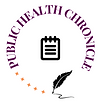Public Health News Analysis
Breast Cancer - A Global Health Perspective

Content Editor : Dr. Urmimala Maiti
Updated on :
March 13, 2023
Preventive Oncology, Women’ rights, WHO, Public Health Policy Framework
The objective of the national breast health program is population-based screening of all women aged 30 to 65 years for breast cancer to enable early detection and management.
Breast Cancer - The most diagnosed form of cancer globally, accounts for 12% of all cancer cases worldwide and is the leading cause of cancer deaths among women, WHO has released the Global Breast Cancer Initiative framework. The executive summary draws our attention toward some very important areas from a public health viewpoint.
Global breast-cancer control is an issue of health along with gender equity and human rights. It has been seen that the burden of avoidable breast cancer deaths is disproportionately higher among low- and middle-income countries (LMICs) where over 70% of breast-cancer deaths are premature, occurring in women under 70 years of age.
Higher breast-cancer fatality rates in the above populations are a result of
late-stage diagnosis.
limited access to quality treatment.
lack of awareness regarding the benefits of early detection and effective therapies.
Table 1: Estimated increases (%) in new cases of and deaths from breast cancer, WHO regions, 2020–2040.[1]

The above table depicts the projected increase in new breast cancer cases and deaths, with african, eastern mediterranean and south-east asian regions projected to have comparatively greater burden than other parts of the world.
Global Breast Cancer Initiative (GBCI) was put forward in 2021 to provide evidence-based recommendations for a phased approach to implementing interventions under three pillars.
Pillar 1: Health promotion for early detection (pre-diagnostic interval)
Key Performance Indicator (KPI): >60% of invasive cancers are stage I or II at diagnosis
Although the strongest modifiable risk factor is alcohol consumption, primary prevention or risk-factor modification cannot prevent or avoid a significant majority of breast cancers. Therefore, the document points out the importance of early diagnosis at a stage when treatment is most effective, best tolerated and least costly.
Early diagnosis begins with breast-health awareness programmes but also necessitates the need for stage shifting to increase the fraction of patients initially diagnosed with early-stage disease. This can be done at all health care systems through capacity building to diagnose symptomatic breast complaints.
An organised, population-based screening is not an appropriate or practical initial step in any setting until the required infrastructure and quality-control measures are in place and fully functional.
Pillar 2: Timely breast diagnostics (diagnostic interval)
KPI: Diagnostic evaluation, imaging, tissue sampling and pathology within 60 days
Studies have identified that delay beyond two months from clinical diagnosis to initation of treatment leads to lower rates of breast-cancer survival. To ensure the same,a balance between the centralisation and decentralisation of diagnostic services is required.
Centralising of diagnostic services ensures maintenance of the quality. At the same time, availability of such services at secondary- level hospitals becomes a necessity.
Pillar 3: Comprehensive breast-cancer management (treatment interval)
KPI: >80% undergo multimodality treatment without abandonment
In LMICS, patients might not be able to complete the full course of treatment for reasons such as,
Inadequate access to hospital services
Unaffordable out-of-pocket expenses
Suffering from side-effects, hence discontinuing treatment.
Incomplete treatment leads to
Poorer patient outcomes like recurrence and death.
Poor quality of life
The above reasons indicate health system failure. A patient-specific management plan becomes necessary including standardisation of patient-centred metrics regarding access to treatments
Patient-reported outcome measures (PROMs)
Patient-reported experience measures (PREMs)
Cancer-directed treatments with supportive services are essential to patient compliance and effective care delivery during treatment, as well as to recovery following therapy.
The document also specifies implementation strategies to a achieve the targets.
Felt needs in India
The objective of the national breast health program is population-based screening of all women aged 30 to 65 years for breast cancer to enable early detection and management.
A situational analysis of breast health care services in 2 states, Uttar Pradesh and Jharkhand, was performed to identify infrastructure and service delivery gaps.(2)
The assessment revealed that,
Adequate capacity for diagnosis and treatment is present in the majority of tertiary care facilities.
However,
The current level of breast health awareness is not adequate enough for the community it serves.
A proper referral linkage from the primary health care level to the tertiary level is lacking.
Only 1 of 13 hospitals had a fully developed palliative care program.
To address cancer as a significant public health issue, breast cancer cannot be overlooked.
The release of the Global Breast Cancer Initiative framework points out the need to rethink our priorities and adopt a more patient-centred, evidence based approach towards breast cancer.
Download the Global Breast Cancer Initiative framework - Click Here
References
Global breast cancer initiative implementation framework: assessing, strengthening and scaling-up of services for the early detection and management of breast cancer. Executive summary. Geneva: World Health Organization; 2023.
Kumar S, Srivastava A, Srivastava AK, Srivastava V, Nair TS, Usmanova G, Singh R, Sood B, Ginsburg O. Designing a resource‐stratified, phased implementation strategy for breast health care services in India. Cancer. 2020 May 15;126:2458-68.
.png)